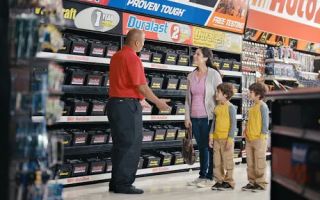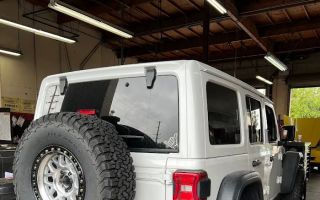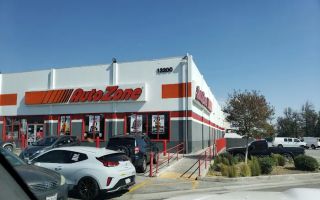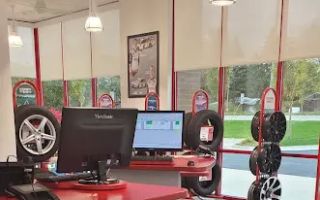Typical Roadside Procedures for Flat Tire Recovery: What to Expect
It’s a situation no driver wants to face: you’re driving down the road, and suddenly, you feel your car start to wobble or hear a strange noise. You pull over to the side of the road only to realize you have a flat tire. Whether it happens in the middle of a busy highway or on a quiet country road, dealing with a flat tire can be stressful. Fortunately, knowing the typical roadside procedures for flat tire recovery can make this experience a lot less daunting. Let me walk you through what happens when you face this situation, from handling the initial panic to the steps involved in tire recovery.

MR. TIRE INC.
2078 New York Ave, Huntington Station, NY 11746, USA
1. Stay Calm and Secure Your Vehicle
The first thing to do when you realize you have a flat tire is to remain calm. I know, it’s easier said than done, but trust me, staying calm will help you think clearly. I once had a flat tire while driving alone on a remote stretch of road at night, and the first thing I did was pull over safely. Here’s what you should do:
- Find a safe location: If you’re driving on a highway or a busy road, try to pull over to the shoulder or into a parking lot. Make sure the location is flat and away from any hazards, like sharp objects or moving traffic.
- Turn on your hazard lights: This is a crucial step that helps alert other drivers that you’re experiencing an issue and that they need to be cautious around you.
- Set the parking brake: This ensures that your car stays stationary while you work on changing the tire or wait for assistance.
2. Assess the Situation: Do You Need Roadside Assistance?
Once your car is safely stopped, it’s time to assess the situation. You’ll need to decide whether you can handle the tire change yourself or if you should call for roadside assistance. For me, there was a time when I was completely on my own and had to handle it myself. However, it’s always a good idea to evaluate your skills, tools, and the circumstances:
- Check the tire: Inspect the flat tire to see if it’s visibly damaged. Sometimes, tires can be punctured by nails, glass, or other sharp objects, and other times, they just lose air due to leaks or wear and tear.
- Evaluate the environment: If you’re in an unsafe location or don’t have the proper tools, calling roadside assistance is the best decision. Trust me, your safety is worth it.
- Do you have a spare and the tools? If you have a spare tire, a jack, and a lug wrench, you may want to attempt changing it yourself, but if not, you should consider calling for help.
3. Calling Roadside Assistance
If you’ve decided to call for roadside assistance, the next step is to get in touch with a towing or emergency services provider. I’ve had a few instances where I didn’t have the tools or was unsure of how to change the tire, so I opted for roadside assistance. Here’s what you can expect when you make the call:
- Provide your location: Be ready with details about your location. Use landmarks, road signs, or GPS coordinates to help the dispatcher pinpoint where you are. The more accurate the information, the quicker help will arrive.
- Describe the situation: Let the dispatcher know that you have a flat tire and whether you need a tire change, a tow, or other services. Some services can even bring a new tire or repair your flat on the spot.
- Estimated wait time: Ask the dispatcher how long it will take for help to arrive. In my case, the wait time was around 30 minutes, which seemed reasonable, considering the time of day and the location.
4. Roadside Assistance Arrives: What Happens Next?
Once the roadside assistance provider arrives, they’ll quickly assess the situation. I’ve experienced this a couple of times, and the process is generally smooth. Here’s what typically happens:
- Safety First: The technician will ensure your car is in a safe position. They may place reflective warning triangles or cones around your car to alert other drivers. They’ll also make sure the parking brake is engaged and the vehicle is stable.
- Remove the flat tire: The technician will jack up your car and remove the flat tire. If you’re having the tire repaired or replaced, they’ll inspect it to see if it can be patched or if it needs to be replaced with a spare.
- Install the spare or new tire: After the old tire is removed, they’ll install the spare or new tire. In some cases, if you’re getting a tire repair service, they might temporarily inflate the tire and take it to a nearby shop for proper repairs.
- Test the new tire: Once the spare is on, the technician will lower your car back to the ground, ensuring the tire is properly inflated and securely attached. They may ask you to check that everything looks good before they finish up.
5. After the Recovery: What You Need to Know
After the technician has successfully fixed your flat tire, there are a few things to keep in mind:
- Check the tire pressure: Make sure the tire is properly inflated to the recommended pressure. If you’re unsure, ask the technician to check it for you.
- Plan for a permanent solution: If your spare tire was installed, it’s usually a temporary fix. It’s essential to get a full tire replacement or repair as soon as possible.
- Keep the service receipt: If you’re charged for the service, keep the receipt for your records. Some insurance policies will reimburse you for roadside assistance fees, and it’s always good to have documentation.
6. Avoiding Flat Tires in the Future
While flat tires are inevitable at times, there are several preventive measures you can take to reduce the likelihood of a flat:
- Regular tire checks: Check your tires regularly for signs of wear and tear, such as low tread depth or visible damage. This can help prevent unexpected flats.
- Proper tire pressure: Ensure your tires are properly inflated. Low tire pressure increases the risk of flats and blowouts.
- Drive carefully: Avoid driving over debris, potholes, or rough surfaces that could damage your tires. This is a simple but effective way to protect your tires and avoid flats.
Flat tire recovery might seem intimidating, but with the right knowledge and preparation, you can handle the situation with confidence. Whether you choose to change the tire yourself or call for roadside assistance, understanding the typical procedures and knowing what to expect can make a stressful experience much more manageable.





























